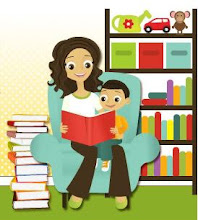Remember having fun making Popsicles when you were a kid? Share the joy of making ice pops with your child.
Items needed:
1. ice cube tray or small paper cups
2. toothpicks or Popsicles sticks
3. aluminum foil
4. juice or lemonade
5. Small pitcher
First, put juice into a small pitcher.
Next, help your child pour the juice into the ice cube tray or cups.
Then, cover the tray or cups with foil.
Then, poke toothpicks through the foil (once ice pops are frozen, the toothpicks will become the ice pop stick).
Next, put the tray or cups into the freezer.
Wait about 2 hours.
Finally, take the foil off, choose an ice pop and enjoy.
Marcia Maynard is a certified reading specialist and early childhood educator. She is the mother of two boys and blogs about preschool activities at http://www.readandraise.com./
If you would like to write a guest post, please
contact me!







